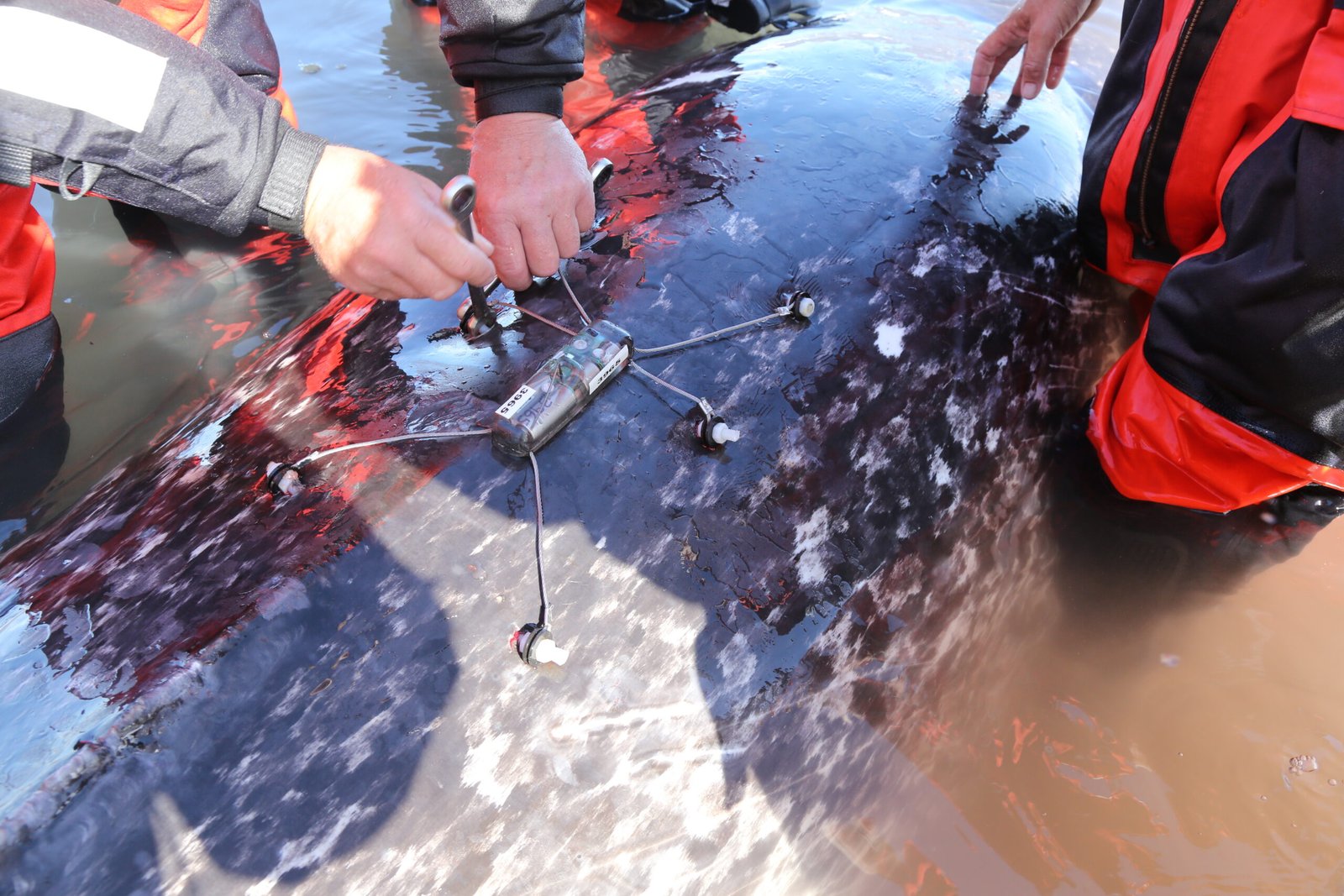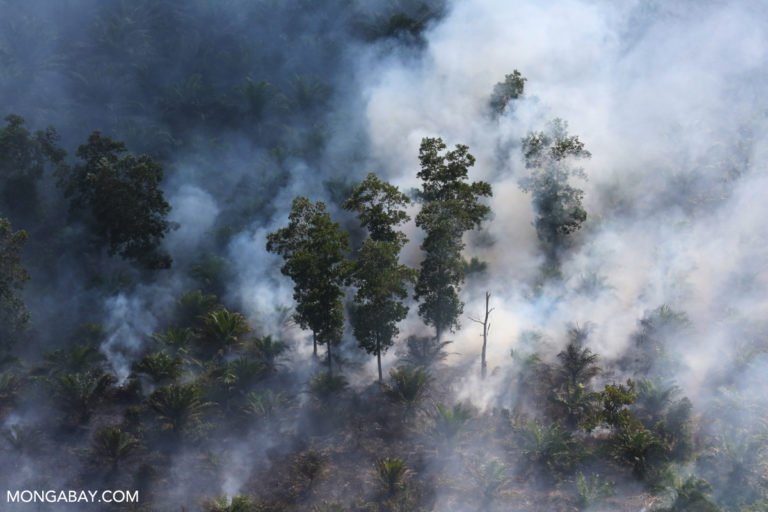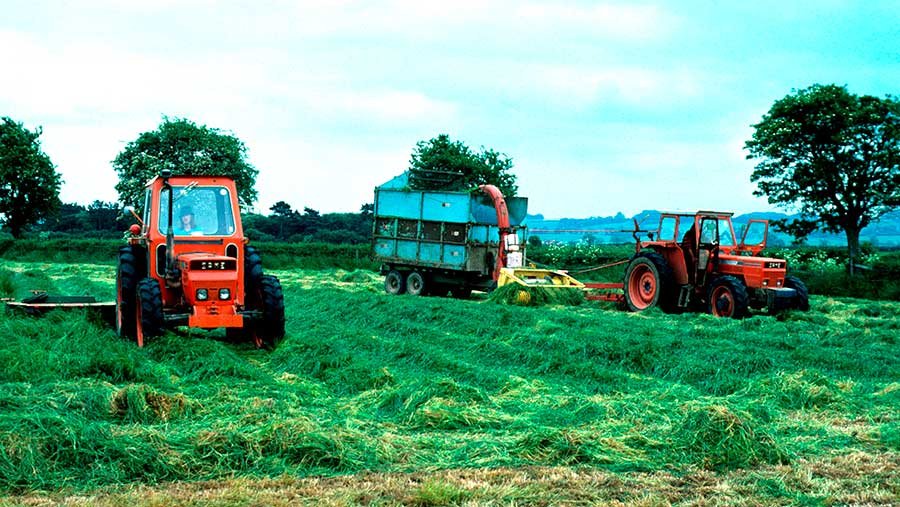- Researchers have used mathematical models based on chaos theory to analyze the movements of a pod of satellite-tagged narwhals.
- Around solar noon, narwhals rest nearer the surface and take deep dives. At night, their dives are shallower but with more rapid and intense movement, likely to hunt for squid. Narwhal behavior also changed according to how much sea ice was present.
- The narwhal life cycle is closely linked to ice. Researchers say this new method may be useful for understanding the challenges narwhals and other Arctic animals face due to the loss of sea ice from climate change.
- Narwhals are among the most highly threatened animals in the Arctic due to hunting, predation, climate change, and the ships and noise pollution associated with oil and gas mining and exploration.
Narwhals are chaotic. At least, that’s what researchers thought until they developed a new math-based method to detect patterns in their seemingly irregular movements.
Narwhals (Monodon monoceros) are known as the unicorns of the sea due to their distinctive single tusk, which is actually a feeling, enlarged tooth with up to 10 million nerve endings. These small whales live in Arctic seas and like to take long deep dives, plunging to depths of more than 1,800 meters (5,900 feet) below sea level.
Scientists have long been stumped by the whales’ behavior, but now researchers have used mathematical models based on chaos theory to analyze the movements of a pod of satellite-tagged narwhals over an 83-day period.
They found that, around the solar noon, narwhals rest nearer the surface, but when they do dive, they dive very deeply. At night, their dives are shallower, but with more rapid and intense movement. Scientists think they may be hunting for squid, which come closer to the surface at night.

“While animal-borne ocean sensors continue to advance and collect more data, there is a lack of adequate methods to analyze records of irregular behavior,” Evgeny Podolskiy a geophysicist at Hokkaido University’s Arctic Research Center and first author of the research, said in a statement.
This novel procedure used to find behavioral patterns amid complex movement was developed by Podolskiy along with Mads Peter Heide‐Jørgensen at the Greenland Institute of Natural Resources and has been published in the journal PLOS Computational Biology.
“Our approach is relatively simple to implement and can map and label long term data, identifying differences between the behavior of individual animals and different species,” the authors suggest.
Narwhals are among the most highly threatened animals in the Arctic due to hunting, predation, climate change, and the ships and noise pollution associated with oil and gas mining and exploration. The authors hope their methods will inform policies to protect threatened species.
Narwhals’ life cycles are closely linked to sea ice, which is an important hunting ground and refuge. When more ice is present, the whales were found to dive more intensely, the study reports.
Sea ice is shrinking by about 13% per decade due to warming from climate change, according to NASA. The researchers said this new method may be useful for understanding the challenges narwhals and other Arctic animals face due to the loss of sea ice.
Banner image: A narwhal by Газпром нефть via Wikimedia Commons (CC BY-SA 4.0).
Liz Kimbrough is a staff writer for Mongabay. Find her on Twitter: @lizkimbrough_
Citation:
Podolskiy, E. A., & Heide-Jørgensen, M. P. (2022). Strange attractor of a narwhal (Monodon monoceros). PLOS Computational Biology, 18(9), e1010432. doi:10.1371/journal.pcbi.1010432
FEEDBACK: Use this form to send a message to the author of this post. If you want to post a public comment, you can do that at the bottom of the page.













